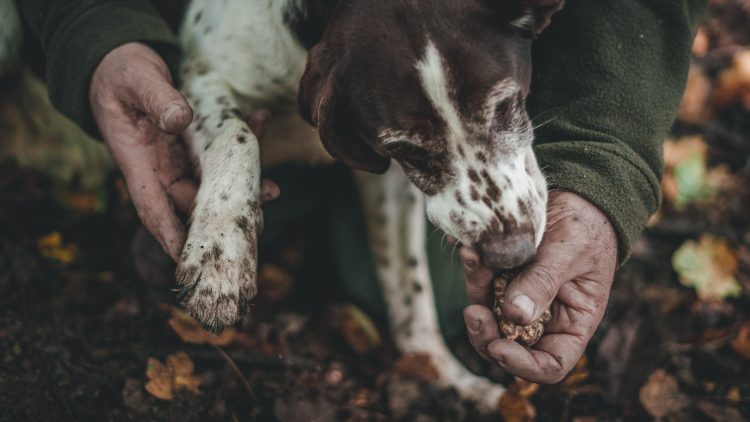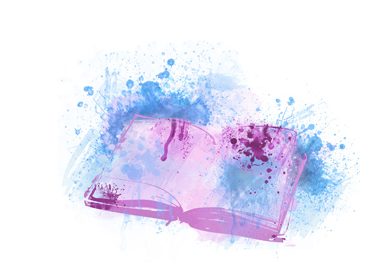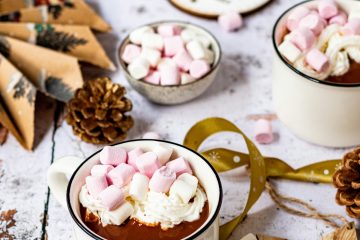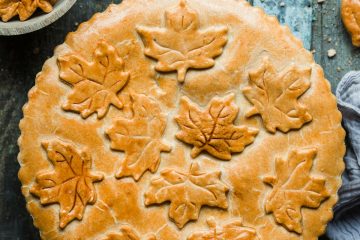Truffle Toil
Q.
Why, for centuries, have people worked so hard to find truffles?
.
A.
There is no easy peasy picking for this fungus. Citizens across France, Italy, Spain have sent pigs, dogs, foxes, even badgers to sniff these ‘black diamonds’ out of hiding. Why?
Plutarch thought truffles were baked by lightening; Juvenal credited a thunderbolt from Jupiter. Galen of Pergamon – a Greek physician serving in the Roman Empire – prescribed truffles to nourish, excite and bring sensual pleasure to his patients.
The truffle, we learn from Italy’s National Centre for the Study of Truffles, is: ‘ the common noun designating the fruiting bodies (sporocarps) of fungi, in genus Tuber, whose entire life cycle takes place in the earth (subterranean). Truffles must live in symbiotic relationships with certain trees in order to produce the precious sporocarps. They present an external skin called peridium, which can be smooth or bumpy and of varying colours.’
.
..
You’ll find precious truffles in white, black, burgundy brown. These strong-smelling diamonds of the earth are celebrated for their striking taste. Long since Galen, many diners continue to look to these fruiting fungi as aphrodisiacs.
In his Physiology of Taste, 18th Century French gastronome Jean Anthelme Brillat-Savarin started his chapter on truffles with: ‘Whosoever pronounces the word truffle gives voice to one which awakens erotic and gastronomical reams equally in the sex that wears skirts and one that sprouts a beard.’
And, presumably, in those who sport beards and wear skirts.
‘It can be stated,’ Brillat-Savarin continued, ‘that at this moment the glory of the truffle is at its peak…. the truffle is the diamond of the art of cookery.’
After convening men he trusted in ‘a committee, in a tribunal, in a senate, in a sanhedrin, in an Areopagus,’ to discuss the erotic qualities of the truffle, Brillat-Savarin declared: ‘We have rendered the following decision, to be commented upon by writers of the twenty fifth century. “The truffle is not a positive aphrodisiac, but it can, in certain situations, make women tenderer and men more agreeable.”
Senate decision notwithstanding, the truffle’s sensual reputation persists. Is it that we assume any food so hard to get and expensive must have sensual qualities?
.
.
Modern researchers have also found that truffles contain the steroid androstenone and pheromone androstenol, which create a musky odor that can be exciting for pigs. Given the associations we humans have built between musky smells and sensual goings-on, perhaps this has contributed to our sexy truffle assumptions.
To add to the black diamond’s mystique, biochemistry researcher Mauro Maccarrone and his team found that black truffles produce a chemical called anandamide, which is similar to tetrahydrocannabinol, or THC, in marijuana.
While researchers parse it all out, chefs continue to understand the power of the truffle. As leading restaurateur Daniel Boulud wrote in his 2003 Letters to a Young Chef:
‘I should also mention something that often precedes texture: the “long distance” taste experience known as aroma. Sit in a dining room when the waiters shave a bulbous white truffle over a steaming risotto: the funky, almost sexy, aroma will reach you, quite powerfully, from fifty feet away. Up close it is as if you are wrapped in a truffle aura, a distillation of all the aromas of an autumn hillside in Alba – fermented wild berries, decaying oak leaves, musk of wild boar, smoky pine balsam.’
.
www.justcurious.ca
Header Photo: Andrea Cairone
Photo 2: Fabian Blank










